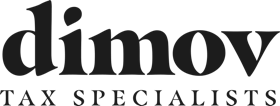First off, let me point out that this is just a study strategy and, although the PETH exam is known to be an “open book exam” throughout the internet blogging universe, I have not seen authoritative guidance from the state designating it as such. For this reason, this strategy may be considered cheating if employed by individuals taking the actual exam. With this being said, I recommend that the PETH exam be taken strictly from knowledge without the use of any physical or electronic assistance. My description below is to be used only for studying and taking practice exams.
Below is the optimal strategy for studying for the PETH exam:
- Order the PDF here (use the online option on the right portion of the screen). Yes, it costs $150. Do not listen to those who claim that the paper is better.
- Have the PDF “Professional Ethics for Certified Public Accountants” open on one screen of your computer and the practice exam open in the other (again, I am saying practice exam in order to not imply that you should do this with the real exam. The best way to prepare for the real exam is to learn the actual material).
- Have a physical copy of the PDF book in front of you on the desk. Yes, this means printing out the entire 298 page PDF.
- When taking the practice exams in order to practice, complete the following steps to find the exact answer:
- Search a portion of the sentence from the question and see if you find a match. Use the search feature in your PDF reader. About a quarter or more of the questions will provide an exact match verbatim based on the keywords. I mean literally the exact sentence. Look at the exact page on the printed file and read the whole passage. The reason I recommend reading each one on the printed book is that the layout is difficult to follow on the PDF while looking at the screen, and many of the exact matches may actually have multiple references throughout the document. You will want to read each of these references, as sometimes they say nearly the opposite thing, based on the exact nature of the question. Do not be tempted to select answers that logically seem right or are “almost correct” as those are frequently wrong due to some nuance.
- Search each sample answer (several of the words together) – another roughly 25% – 50% of the questions can be found this way verbatim. There will literally be exact matches. Again, my instructions above apply here – mark down each page number that the reference appears, and read each of those paragraphs. I am saying this as I personally missed questions several times when studying due to some nuance of the question that I would have known had I read and understood the entire relevant paragraph when preparing for the exam. This is why I recommend using the “find all” in the pdf editor, then finding each section in the print and reading it while bookmarking it for further review and comparison for consistency with any other possible references.
- If neither of the above work for a sentence in the question or answer choices, then search the keywords in the index. There will usually be between 2 and 12 references in the index of the book for the keyword. Go through each one in the book. This may seem tedious, but I cannot stress enough how tricky this exam is when it comes to having nearly the same situation, but a slight difference makes the answer wrong. An example of this has to do with seemingly half the exam consisting of independence-related questions, where independence is impeded by someone simply being in a different job title, having different relatives, having a different company structure, or being located at a separate office that does or does not participate in an audit, or in any case does a variety of different accounting engagements for a particular client. One can construct a matrix with dozens of variables that play into this. For that reason, make sure to read each reference in the index of the file.
- If none of the three first options above work, take a look at the chapter questions at the end of each chapter. I have found that 10-20% of the questions have a very similar practice question at the back of the chapter that addresses the situation. There are also sections (particularly in chapter 4 for independence) that are named “AICPA Staff Responses to Inquiries” which have a question and answer format that sometimes contain the question at the end of the chapter rather than as a reference in the text.
- Be careful to distinguish AICPA, PCAOB, GAO, SEC, and California-specific questions. The AICPA topics are covered in nearly the entire book, while questions pertaining specifically to regulations of the PCAOB, GAO, SEC are located in chapter 5. These rules are sometimes entirely different for one agency than they are for another. Secondarily, these rules are sometimes different than the ones promulgated by the AICPA. For this reason, make sure that you are reading the correct section! For questions pertaining to California (or any mention of CA), please use chapter 14, as those rules are sometimes different for CA than they are for the other authoritative bodies.
- There will be roughly 3-5 questions that will simply not have any exact reference from the above steps. With those, try to read the relevant sections and understand what is going on. Make sure that you are 100% comfortable with the questions with exact references, as you may get these wildcard questions wrong
- Print out the exam as you are taking it and note the relevant page numbers on the printed exam. PDF the exam once you are finished, so you have all your answer selections written down on the paper and have a copy of the PDF. The reason to do this is that in case you fail, it can be great reference material and study material for later. Some very similar questions will appear on the next exam that you take.
Other facts about the exam:
- You need a 90% to pass. Yes, that is an extremely high score, and if you read online, you will notice that most people fail the first two attempts. This is a horrendous waste of time, as the exam has no time limit. Which brings me to my next fact:
- The exam has no time limit.
- The exam is administrered directly on your browser. If you spend hours and hours on the exam, you may be concerened with being logged out and losing all of your answers. This will not happen. The system will remember each response. If you do submit hours later, however, it will say that you are logged out and will re-ask for your password. However, when you log back in, all of your prior selections up to the last minute will be there. So, the exam can technically be taken for hours.
- If you happen to fail the exam three times (this did not happen to me), you can request another three exams from CalCPA (the test administrator). However, keep in mind that at a certain point they will force you to take paper exams and submit them.
- You do not have to wait a certain time period after failing the exam to retake it. You can retake it the same day immediately after you fail.
- The Ethics Exam is administered only by CalCPA. Unlike the continual education requirements of CA, there are not several providers to choose from.
- The only study material you need is the book that you get when you pay the $150 for the exam.

Need some help? Please fill out the form below and one of our specialists will get back to you immediately.




"*" indicates required fields


